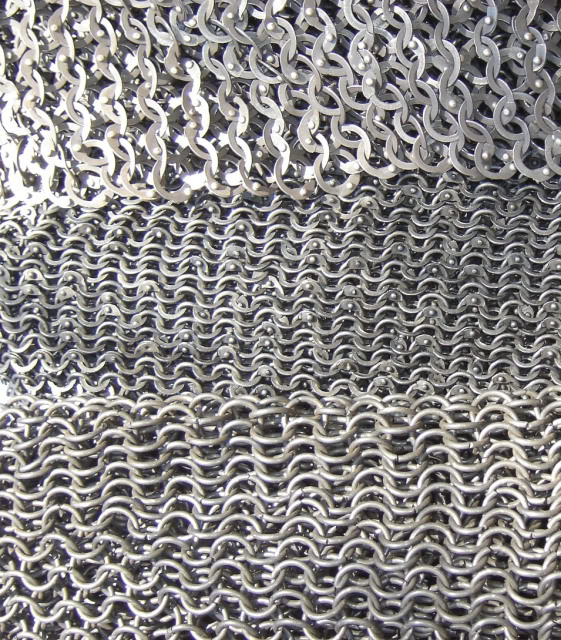| Sander Marechal wrote: | ||
I can tell you next week. Next sunday there's a fair in The Netherlands and there's a shop there that sells Ulfberth mail. I don't know if they will bring it to the fair but if they do, I'll have a look. |
Well, the store did not bring any mail to the fair, but I went to their shop last weekend.
It was difficult to test how sharp Ulfbeth mail is. First of all, the store clerk did not want to tell me the manufacturer of the hauberks. He may not have known but he is probably worried that if he tells that, I will be buying directly from the manufacturer to save cost. I have heared that comment from other store clerks at different stores as well. I think I found a couple of Ulfberth products though. It's not that hard to tell apart from the really cheap indian stuff.
Second, I was only allowed to handle the hauberks with gloves on because they were untreated mild steel. The gloves were very thin though, so I could feel it reasonably well. In a different sore they did not require me to wear gloves.
From what I can tell, the Ulfbeth flat rings are not really sharp. Less sharp than the indian mail for sure. The rings are still quite thin and do have somewhat of an edge and the backside of the round rivets looks and feels a bit like a small column, so chafing may still be a problem. I can't tell for sure. But it sure felt better than the cheap indian zinc coated mail. The overlap on the indian mail is stamped so flat that they become sharp.
I also handled the Ulfberth hauberk with round rings and round rivet heads. It feels better/smoother than the flat ring version on the inside of the hauberk. Due to the round rings of course. It also felt better than the indian mail with round rings.
My biggest surprise however was a mail standard I inspected. It was made of thicker flat rings and wedge shaped rivet heads all had a watershed! So, someone out there is making mail with a watershed. That standard felt pretty smooth on the inside. Of course, I have no idea who the maker of that standard is as the store clerk declined to tell me.
Anyway, I hope this helps! If you decide to get the Ulfberth mail, please do post here or in a new thread. I'd love to hear what you think of it!
